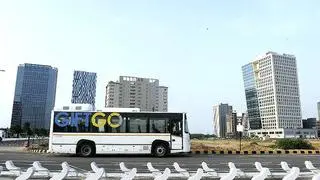Covid-19 has drastically changed consumer behaviour. With physical retail coming almost to a standstill over the past couple of months, there has been a surge in demand for hyperlocal delivery, specifically for essential goods, thanks to local businesses trying to serve customers in their areas.
Praharsh Chandra, co-Founder and COO, Shadowfax, said that during the initial phase of the lockdown, the company saw the demand for hyperlocal delivery of essential category goods peak to almost 3-5 times of what they recorded pre-Covid. He added that they now see the demand coming from other categories too, including food deliveries.
In many ways, the lockdown has brought a permanent shift in seller and buyer behaviour, that will continue post the lockdown as well, said Saahil Goel, co-founder of Shiprocket. Shiprocket launched the hyperlocal delivery pilot on its platform in early May and is planning to open it up for all its merchants over the course of the next 4-6 weeks.
Increasing dependence
“Covid-19 might well be the epochal moment, with consumers now starting to use it for literally every daily requirement,” said Krishna Khandelwal, Chief Business Officer, Locus, a business to business (B2B), software as a service (SaaS) platform that automates human decisions in the supply chain. “With the expected surge in volumes for e-commerce, the “Pick-Up” and “Drop Off” model will gain prominence. The local kirana stores will act as the new ‘warehouses/hubs’ for deliveries. E-commerce firms will deliver products to the kirana store, which will further do door-to-door delivery,” he added.
From food to grocery, consumers are slowing growing to be dependent on hyperlocal deliveries. While on one hand, it has helped do away with long queues, on the other , it has also pushed the previously offline consumers to take to online shopping from the convenience of their homes.
The fact that so many retail brands are launching their own hyperlocal delivery services speaks of the potential of this space to grow and become mainstream, said a spokesperson from Dunzo, which has also been seeing its average order value increase 4x times since April 2020. “Hyperlocal delivery will become a routine way of life, with more users adopting delivery platforms to transact. Depending on regulations and health and safety, people will be less likely to interact with the physical world, beyond their homes. With work from home also becoming a part of life, more users will leverage the convenience of home delivery,” the spokesperson added.
The supply-side constraints have considerably eased over a period of time, and companies have now adjusted to the new normal, ensuring a better delivery experience, noted Locus’s Khandelwal.
Convenience over cost
While post-lockdown, hyperlocal delivery might expand beyond groceries and essentials, there are a few hiccups involved, such as predicting demand, availability of enough riders to meet it and the higher cost for doorstep delivery.
But, with safety becoming a priority and people wanting to stay indoors for fear of contracting the virus, consumers might want to put convenience and safety over cost, said heads of these firms.
“Historically, the cost factor and the availability of the right technology for efficient decision making have been the roadblocks for hyperlocal deliveries. But, the Covid-19 pandemic has made hyperlocal deliveries a necessity. Consumers might now be willing to pay for convenience,” said Locus’s Khandelwal. He added that the rapidly increasing hyperlocal delivery volumes might finally be able to justify the costs by using the right technology to bring in the necessary efficiency in the process.
Fast adoption of technology by both customers and neighbourhood shops, the comfort of buying and selling at the click of the button, deep penetration of warehouses in most localities, quick transportation, easy availability of highly mobile delivery partners etc. are a few critical factors that will further drive the surge of hyperlocal delivery post-Covid in India, said Shadowfax’s Chandra.








Comments
Comments have to be in English, and in full sentences. They cannot be abusive or personal. Please abide by our community guidelines for posting your comments.
We have migrated to a new commenting platform. If you are already a registered user of TheHindu Businessline and logged in, you may continue to engage with our articles. If you do not have an account please register and login to post comments. Users can access their older comments by logging into their accounts on Vuukle.